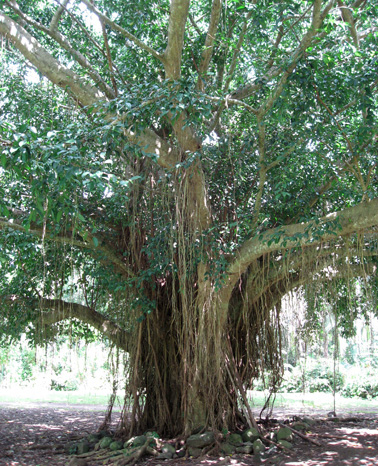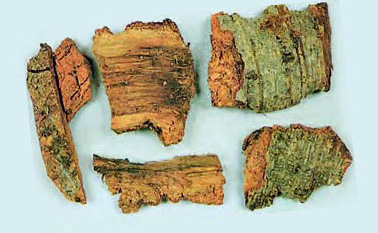|
Botanical Name:
Ficus benghalensis
Nyagrodha consists of dried mature stem bark of Ficus
bengalensis Linn, Family Moraceae
Common Name(s) in English & Indian Languages
Sanskrit: Vata Jata, Bahupada
Bengali: Bar, Bot
English: Banyan Tree
Guajarati: Vad Vadavai
Hindi: Baragada jata, Valajatta
Kannada: Alada Chirugu
Malayalam: Peralveru
Marathi: Vada Paranika
Oriya: Bara gachha
Punjabi: Bardajattu
Tamil: Alamvizhuthu
Telugu: Peddamatti, Marri Udalu
Urdu: Bargad
Botanical description:
Very large evergreen, deciduous, spreading, epiphytic trees
with numerous aerial roots from branches, which form into
accessory trunks. Tree often reaches a height of 30 metres.
Bark grey, smooth. Young part pubescent, aerial roots
becomes thick, trunk like after touching the ground. Young
shoots pubescent, growing points covered by deciduous
spathes. Leaves cariaceous, 4-8” long or attaining 10” by
7.5” in robust specimens, alternate, orbicular-ovate to
elliptic, obtuse, entire, minutely pubescent beneath, base
rounded or sub-cordate. Petioles upto 4 cm long, strout,
stipules 2cm long, sheathing, receptacles 1-2 cm in
diameter, in auxiliary pairs, sessile, globose, puberulous,
red when ripe, supported on 3 broad cariaceous bracts.
Parts used:
Stem bark
Major chemical constituent:
Tannins, glycosides and flavonoids
Therapeutic uses:
• Burning sensation (Daha)
• Increased frequency and turbidity of urine (Prameha)
• Bleeding disorder (Raktapitta)
• Thirst (Trsna)
• Erysepales (Visarpa)
• Ulcer (Vrana)
• Disorder of female genital tract (Yonidosa) |
|


|
|
|



